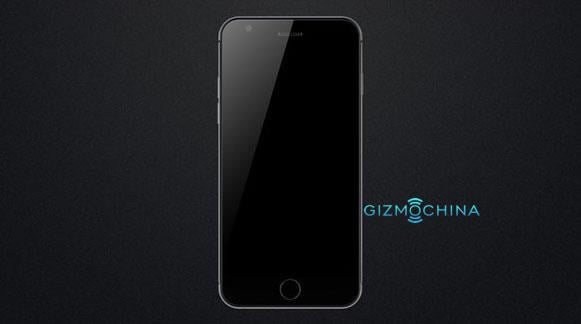![[IMG]](https://www-techinasia.netdna-ssl.com/wp-content/uploads/2014/12/mailinh-grabtaxi-uber-vinasun-easytaxi.jpg)
The assault of the apps: Vinasun vs GrabTaxi and EasyTaxi
In December 2013, EasyTaxi landed in Vietnam. In February 2014, GrabTaxi came to Vietnam. And finally, in June, Uber arrived. GrabTaxi and Uber have been especially hot in the news. Although the initial uptake for GrabTaxi and Uber has not been a hockey stick of growth (it doesn’t work that way in Vietnam anyway), it was significant enough in recent months to ignite the incumbents, media, police, and government.
Vinasun has threatened to fire drivers it catches using GrabTaxi or EasyTaxi to catch leads. This is indeed difficult to enforce, but it is still a looming dread for poor drivers. Mai Linh, on the other hand, is in a position where it needs all the help it can get. But why is Vinasun really so afraid of the taxi booking apps in the first place?
In addition to deals that the taxi companies make with local buildings, the taxi company business model already fits together like a nice puzzle. There’s the call center, radio and walkie talkie system, the branding, the advertisement gleaned from in-taxi video, and the allocation of taxi resources across the city that all amount to a multi-faceted and entrenched business. But two of those things, which make up the meat of the Vietnamese taxi business, are obsolete with the entrance of an app equipped with GPS. Good bye to the thousands of employees across Vietnam who run call centers and book taxis via walkie talkie. But let’s be honest, firing these people is a short term pain, especially if Vinasun or Mai Linh (although Mai Linh is less incentivized since it owns less of its own taxi assets) can create their own apps.
What’s preventing taxi companies from making their own apps
Across the world, there is an odd phenomenon. All the media are talking about Uber disrupting the taxi companies but simultaneously there are no announcements of taxi companies creating apps to battle Uber. At most, we see taxi companies trying their best to lobby Uber out of their cities. Vinasun is no different. The economics of building a taxi app are too overwhelming.
Here are four of the key reasons why I believe taxi companies like Vinasun cannot build a taxi app to take on GrabTaxi:
- User experience: Do not underestimate how hard it is to create a great user experience. The Vietnamese startup ecosystem made ferocious analyses of the subtle differences between GrabTaxi and EasyTaxi. These differences have played a significant impact on the reception of the apps by drivers and passengers. In sum, drivers and passengers in Vietnam love GrabTaxi more than EasyTaxi. If it’s already hard for a company like EasyTaxi to beat GrabTaxi on a UX level, how can you expect Vinasun, a taxi company with no technical background, to pull it off?
Call centers and walkie talkies: These are the tools Vinasun and Mai Linh use to secure and maintain marketshare. And they will get eaten alive by GPS-enabled booking apps. Firing all their staff or transitioning the mentality of thinking in terms of radio to bits is a hurdle.
Regulation and taxes: Taxi companies are currently regulated by local and federal authorities. Specifically, in Vietnam, the authorities are the Ministry of Transport, which is still reviewing the legality and current regulation of Uber. The Vietnamese media has erroneously circulated that Uber drivers were fined, but a spokesperson from Uber who talked to us said that is not true. Five drivers were indeed detained by local authorities, but since there is no legal precedent yet, the drivers were immediately released and on the road the next day. Tech In Asia spoke to the Vietnam E-commerce and Information Technology Agency, and who said services like Uber should be supported in Vietnam; they offer a better service than what is already offered. The current Vietnamese media is slanted in favor of the taxi companies, but we need to take a balanced view of the situation, from the perspective of the customer and the companies, new and old. The central issue here is taxi companies don’t want to take the risk of building an app into an area that is still murky internally and externally. It would be a struggle for them to build an app, and it would be a struggle to get adoption for the app. Thus, it’s better to watch, wait, and protect their current pie. But protecting your pie means you might be missing out on other pie to be had.
Lack of scalability: And lastly, probably the most important barrier for a taxi company building an app is the scalability. For GrabTaxi and EasyTaxi, they can host multiple different taxi companies on one platform, and they can head to any city in the world if they can find the staff and the cash (and clearly, they now have lots of cash). If Vinasun built an app, it would be only able to host its own fleet of cars only. It’s not worth it, even as a defense.
Given the above, it’s clear that the incumbent taxi companies have no reason and no way to build a booking app that can compete with GrabTaxi and EasyTaxi.
![[IMG]](https://www-techinasia.netdna-ssl.com/wp-content/uploads/2014/06/uber-vietnam.jpg)
Uber vs all of the above
Before we get into the nit and grit of the war with Uber, let’s put one thing to rest. The idea that Uber does not compete against its taxi booking app equivalents. This is something that you may often hear from supporters of the taxi booking apps. They’ll say “No, see, taxi booking apps don’t compete against Uber. Uber is on the high end limo and black car market, whereas they’re on the mid-end with taxis.” This is just bullshit. The transportation market is a zero sum game. This is the opposite of the chat app battle. With chat apps, users can download multiple apps and use them simultaneously with different friends and groups. With a car booking app, when you book one car, it means you don’t book another car. There can only be one winner. When a potential passenger books on Uber instead of GrabTaxi, that’s a loss for GrabTaxi. This is one big reason why Uber is such a hot topic in media across the world. Not to mention, this tweet from Sam Hutchings on Uber usage:
Any valuation of Uber based on the taxi market ignores one thing: I’ve used Uber more in 9 months than I did taxis in the 24 years prior.
— Sam Hutchings (@Smutchings) November 24, 2014
There are six reasons why Uber strikes fear into the hearts of Vietnamese taxi companies:
- Better service: This includes user experience, car quality, driver quality, and credit card usage. There is the user experience of sending an email after your ride and the app itself, which is world class. All the cars are cleaner, smell better, and look nicer. Most taxi drivers in Vietnam smoke cigarettes in their cars, this affects the smell of the car. A select few drivers in Vietnam will take advantage of naive passengers (especially tourists) and take them for extra routes, Uber’s rating system is a foil for that. And lastly, credit card usage eliminates the hassle of pulling out cash after taking a ride.
Cheaper: Currently, Uber is offered at about two thirds the price of a taxi. It has yet to offer UberX or UberPool in Vietnam, but when that happens, it will be able to offer diversified pricing.
Allocated pricing: Around 6:30pm to 7pm every weekday, Uber experiences surge pricing to meet demand. At that time, it’s price goes up to a regular taxi price. But Uber also now offers passengers an opportunity to take their rides out into the provinces. The system will change pricing once users hit a certain mileage. Taxis, on the other hand, stick to their pricing per mileage despite going longer distances.
Upselling and miscellaneous logistics: Across the world, Uber has performed unique marketing tactics to get media coverage. In San Francisco, it delivered kittens to users. In Ho Chi Minh city, it provided Bentley cars, which delivered Macaroons to passengers. Some may say this is just Uber testing the water and doing some fun marketing. But it’s introducing users to the possibilities that its logistics service could offer.
Working directly with limo companies: In Vietnam, Uber does not work directly with drivers who sign up for the platform. Uber works with companies that own cars that hire drivers. This protects Uber as a platform because technically, every user has hired the driver, not Uber. The companies pay the tax legally. This protects Uber from a certain amount of litigation.
Uber’s terms and conditions: Finally, there is one final scary thing about Uber, it’s legal precedence. In its terms and conditions, it states very clearly that “[the user] acknowledge that Uber does not provide transportation or logistics services or function as a transportation carrier.” That’s right, look it up. Uber has ironclad legal terms and conditions that are very hard for anyone to assault. Combine this with Uber’s latest round and you see a company with the legal and financial backing to make anything happen in Asia.
Despite all this, it’s interesting to note that Uber likely has less cars in the two major cities as GrabTaxi. If you log onto GrabTaxi and Uber in any central location in Ho Chi Minh city, you will immediately see the disparity. On GrabTaxi, there are easily 5 to 10 times more cars on their app in every location. But that hasn’t stopped Uber from signing more contracts with more local black car companies.
Online vs online: Uber vs GrabTaxi vs EasyTaxi
The battle between Uber and its taxi booking app equivalents is a more regional and global concern. And in the long term, a more important battle (thus giving birth to the massive funding rounds focused specifically on Asia). Uber battles Lyft at home while it battles GrabTaxi and EasyTaxi in Asia. Uber and Lyft share similar models, they employ independent cars and therefore threaten taxi companies directly. GrabTaxi and EasyTaxi, on the other hand, serve as trojan horses. It appears that GrabTaxi is helping the taxi companies, but it’s not. They serve the users first, themselves second, and the taxi companies third. GrabTaxi hosts multiple taxi companies on one platform, it therefore does not serve any one brand. It allows the user to choose whatever cab is closest. Vinasun doesn’t want that, it wants the user to always choose Vinasun. GrabTaxi serves convenience, Vinasun serves brand loyalty. GrabTax is therefore a trojan horse, an enemy masquerading as a gift, and Vinasun knows this. And although Uber serves black cars (and independent cars) and GrabTaxi and EasyTaxi serve the taxi companies, the truth is they both operate the same. They both work with taxi or limo companies to get drivers and both use marketing and PR to secure more passengers.
The difference is that Uber, as stated earlier, simply provides a better service via its app and high quality cars and drivers. Note that even though Uber provides the same Toyota Innova cars that Vinasun has, the Uberized cars are much cleaner and newer. In terms of the apps, Uber’s also better. There’s no cash payment, but it also doesn’t require users to enter their destination, something GrabTaxi requires users to do before booking a taxi. On the other hand, at the moment, there’s no doubt that GrabTaxi has more taxis on its service. As Ben Thompson has argued on Stratechery, gaining more drivers is a natural cycle to getting more passengers. More drivers means more availability of cars and convenience and therefore more passengers. The power of being the first mover in the taxi market is huge, and is likely why both GrabTaxi and Uber are on a breakneck pace to raise more money.
Taxi app vs taxi app: GrabTaxi vs EasyTaxi
In total, GrabTaxi has raised a total of $340 million since inception while EasyTaxi has raised a total of $77 million. But with GrabTaxi, its millions are earmarked to battle it out in Asia. With EasyTaxi, that money is spread out across the world, from South America to Asia. This will hurt EasyTaxi in its execution in Asia. At the same time, given that GrabTaxi has raised so much, it is likely that the company will outspend EasyTaxi by an order of magnitude. If it secures the market in this time, and passengers flock loyally to GrabTaxi, then it spells the death of EasyTaxi. But if GrabTaxi overspends, it is also possible that EasyTaxi will lie in wait for a year or two for GrabTaxi to burn out, teaching the market, and battling with local tax companies and Uber, and then swoop in with another round of funding and take the market. Who knows? It’s clear though, that EasyTaxi, a Rocket Internet company, is in it for the long run across the region, just like GrabTaxi.
Offline vs online vs online: a multi-sided war
This war for transportation is brewing with strategy and tactics. It is fought on multiple fronts with multiple strategies and business models. It’s a picture of how technology companies will inevitably assault the most entrenched and unassailable offline industries. Anybody who is not preparing for assaults from mobile apps and applications is likely deluding themselves. And anybody who studies business in the 21st century ought to be taking notes.
This post Meanwhile, in Vietnam: Uber vs GrabTaxi vs Vinasun vs Mai Linh vs EasyTaxi appeared first on Tech in Asia.




![[IMG]](http://cdn04.androidauthority.net/wp-content/uploads/2014/12/Google-Play-Store-Best-Cyber-Week-Deals-2014.png)
![[IMG]](https://www-techinasia.netdna-ssl.com/wp-content/uploads/2014/12/yahoo-720x525.png)
![[IMG]](https://www-techinasia.netdna-ssl.com/wp-content/uploads/2014/12/Kairos-T-band-photo-1.jpg)
![[IMG]](https://www-techinasia.netdna-ssl.com/wp-content/uploads/2014/12/codemasters.jpg)
![[IMG]](https://www-techinasia.netdna-ssl.com/wp-content/uploads/2014/12/deadtarget7.jpg)
![[IMG]](https://www-techinasia.netdna-ssl.com/wp-content/uploads/2014/12/deadtarget1.jpg)
![[IMG]](https://www-techinasia.netdna-ssl.com/wp-content/uploads/2014/12/deadtarget10.jpg)
![[IMG]](https://www-techinasia.netdna-ssl.com/wp-content/uploads/2014/12/Akemis-Games-720x396.jpg)